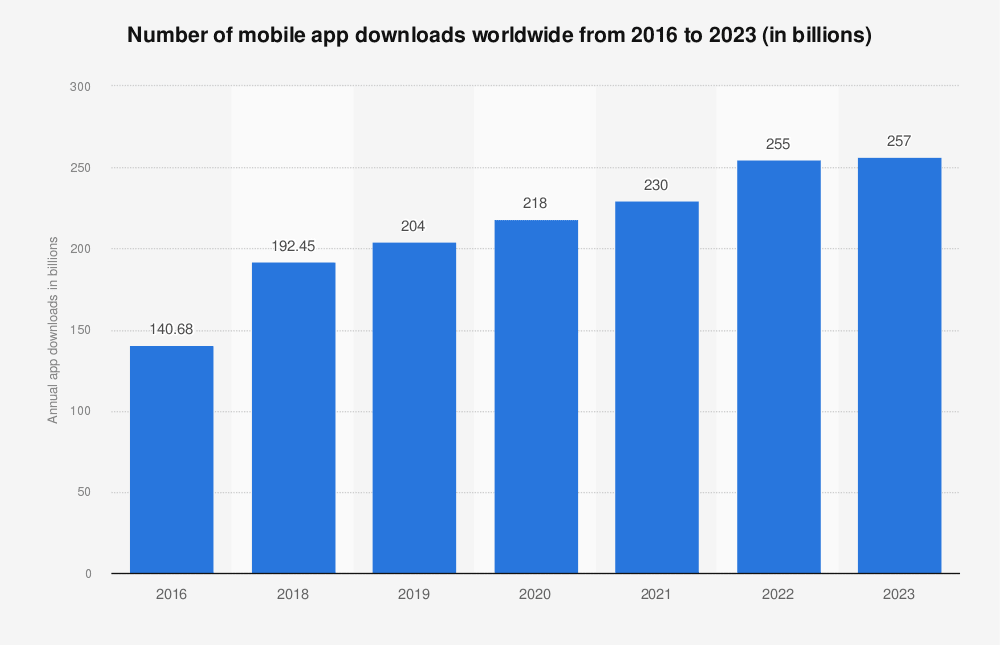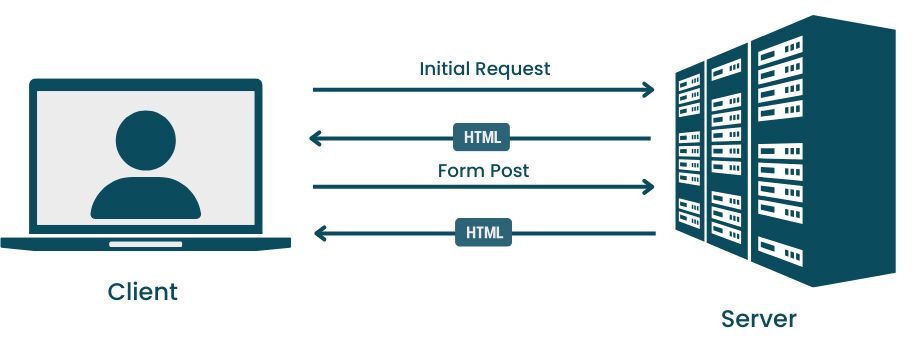Mobile App Testing Vs. Web App Testing: What’s The Difference

As software applications have evolved over the past two decades, their reach has expanded to various platforms. For instance, desktop applications like Microsoft Office have transitioned to web applications like Office 365, and web applications like Amazon now have companion mobile applications.
According to Statista report, global app downloads stood at 257 billion in 2023. The app market is expected to generate $613 billion in revenue by 2025.

There is a significant difference between web and mobile platforms in terms of characteristics, interaction methods, and user expectations. Mobile app testing refers to testing application software for controlling and handling mobile devices. In contrast, Web app testing refers to testing application software hosted on the web to ensure quality, functionality, usability, etc.
In this article, we will examine how mobile app testing differs from web app testing, highlighting the types and tools used with each approach and how each is tailored to different platforms.
What are Web Applications?
Web applications, often called web apps, are software applications that run on a web server and are accessed via a web browser on the Internet. They are developed using web technologies such as HTML, CSS, and JavaScript, ranging from simple static websites to complex data-driven applications.
Web applications are hosted on a central server rather than installed on users’ computers. They can be accessed from any device with an internet connection and a web browser. Updates are performed centrally on the server so all users can access the latest version without manually updating their devices. Google Docs, Facebook, and Amazon are examples of web applications.
Types of Web Applications
Web applications provide users with a wide range of services and functionalities.
They can be categorized into four types:
- Static
- Dynamic
- Single-Page
- Multi-Page Web Applications
Static Web Applications

Basic web applications fall into this category. The content on these applications is fixed and does not change in response to user input. They are typically built using HTML and CSS. An example of a static web application could be a personal portfolio website or a company’s landing page.
Dynamic Web Applications

A dynamic web application generates content in real-time in response to user input or changes in the environment. Typically, it stores and retrieves data using server-side scripting languages like PHP, Node.js, or Python. A social media application like Facebook or Twitter could be an example of a dynamic web application.
Single-page applications (SPAs)

SPAs are web applications that load a single HTML page and dynamically update that page as the user interacts with the app. As with desktop applications, they are created using JavaScript for a fluid, fast user experience. Examples of SPAs include Google Maps and Gmail.
Multi-Page Web Applications

Each time a user navigates the site, the entire page is reloaded, and new data is displayed from the server. Multi-page web applications are typically used in large-scale applications with large content, such as e-commerce sites. An example of a multi-page web application could be an online shopping site like Amazon.
Types of Web Application Testing
A web application can be tested in various ways, each focusing on a different aspect. Among them are the following two:
Functionality Testing
This type of testing aims to ensure that the web application complies with the requirements. This process checks all links, forms, and database connections in the web application.
Functionality testing, for instance, checks whether a form submits data correctly, validates user input, and provides the proper message after submission.
Interface Testing
A software interface test verifies how two systems interact within an application. It allows communication between components, such as APIs, UIs, servers, graphics, etc. The test uses commands, messages, and data transfer techniques to connect the user and the application.
An interface test does not validate the functioning of a single component. It only checks that two interfacing systems communicate properly for the software to function properly. During the testing phase, the developers deal with any conflicts or issues.
Tools for Web Application Testing
Testing web applications can be performed using various tools and frameworks, each with its own strengths and limitations. Selenium is a popular tool for automating browsers, making it useful for functionality and interface testing.
JMeter is another powerful tool used for load testing and measuring performance. Frameworks like Mocha and Jest are widely used for unit testing in JavaScript applications.
Postman is a great tool for API testing, while tools like Cypress and Puppeteer offer end-to-end testing solutions. Furthermore, Tools like aXe can check accessibility. When used correctly, these tools and frameworks can significantly improve the quality and reliability of web applications.
What are Mobile Applications?
Mobile applications, often called mobile apps, are software applications designed to run on mobile devices such as smartphones and tablets. These apps provide a range of functions, from email and weather updates to games and streaming platforms.
Mobile apps are typically developed for iOS and Android operating systems and downloaded from platform-specific app stores like the Google Play Store for Android and the App Store for iOS.
Types of Mobile Applications
Mobile applications can be categorized into three types:
- Mobile Web Applications
- Native Mobile Applications
- Hybrid Applications
Mobile Web Applications
Mobile browsers are required to access these websites. Their responsive design fits different screen sizes, providing a similar app-like experience without requiring downloads. For example, mobile versions of news websites like CNN or BBC can be categorized as mobile web applications.
Native Mobile Applications
These applications are developed specifically for a particular mobile operating system (like iOS or Android) using languages the platform accepts (like Swift and Objective-C for iOS, Java and Kotlin for Android). Examples include apps like WhatsApp, Instagram, and Snapchat.
Hybrid Applications
Hybrid apps combine web and native applications. They are developed using standard web technologies like HTML, CSS, and JavaScript and packaged as native apps. This allows them to be installed like a native app while remaining platform-independent.
Examples of hybrid apps include Instagram, Uber, and Twitter.
Types of Mobile Application Testing
A mobile application test is critical to verify that the app works as expected and offers a consistent experience across multiple devices and operating systems. Here are some types of mobile application testing:
Usability Testing
A usability test assesses how user-friendly and intuitive a product or service is through direct user testing. For example, it checks whether the buttons are easily clickable, the text is readable, and the navigation is intuitive.
Performance Testing
Performance testing checks how well the application performs under different conditions. It includes testing the application’s speed, responsiveness, and stability under varying workloads. It also checks how the app behaves in terms of low battery, network coverage, and peak load times.
Security Testing
Security testing is crucial to protecting the application from threats and vulnerabilities. It includes testing the application’s data security, authentication, and authorization policies and checking for potential vulnerabilities or weaknesses.
Interruption Testing
This type of testing validates the application’s ability to handle interruptions like incoming calls, SMS, low battery notifications, network outages, etc. The goal is to ensure that the app can handle these interruptions gracefully without crashing or losing data.
Compatibility Testing
Compatibility testing checks the application’s compatibility with different devices, operating systems, screen sizes, and resolutions. The aim is to ensure the app provides a consistent user experience across all devices and platforms.
Localization Testing
Localization testing ensures the application is properly localized for a specific region or language. It checks the app’s UI, content, and date/time format to ensure they are appropriate for the target locale.
Installation Testing
Installation testing checks that an app can be seamlessly installed and works as expected after installation. It tests the steps a user needs to take to install the app, and also verifies the app’s initial functionality.
Tools or Frameworks Used for Mobile App Testing
Various tools and frameworks are available for mobile app testing. Appium stands out as a widely used open-source tool renowned for automating native, mobile web, and hybrid applications on iOS and Android platforms.
When it comes to writing UI tests for Android and iOS apps, Espresso and XCUITest are the go-to tools, respectively. For gray box end-to-end testing of mobile apps, Detox is often the preferred choice.
Performance testing is another crucial aspect of mobile app testing, and this is where tools like JMeter and LoadRunner come into play. Security testing, an equally important facet, can be efficiently handled with tools such as OWASP ZAP and Kiuwan.
Lastly, vendors like Testlio serve as a reliable crowd-testing platform for compatibility and localization testing. As a result, the mobile app testing landscape offers a variety of tools and frameworks that cater to different types of testing.
Difference between Mobile Application and Web Application Testing
Testing is a crucial part of both web and mobile application development. However, the testing strategies for these two differ due to their unique characteristics and usage patterns.
Here’s a comparison of different parameters:
| Parameters | Web Application Testing | Mobile Application Testing |
| Device Compatibility | Tested across different browsers like Chrome, Safari, Firefox, etc | Tested across a range of devices with different screen sizes, resolutions, and hardware configurations |
| OS Compatibility vs. Browser Compatibility | More focus on browser compatibility, as the application is accessed through a web browser | Tested on different versions of the operating system to ensure compatibility |
| Client-Server Testing | The client is the browser, and the server is the web server. | Can be either client-server applications or standalone applications |
| Mobility Testing | Should be responsive and function correctly on mobile devices | Tested in different mobile environments and conditions |
| Usability | Provides a good user experience across all supported browsers | Provides a good user experience on all supported devices |
| Application Updates | Updates are typically made on the server side | Updates are typically delivered through app stores |
The Role of a Crowdsourcing Partner and Real Devices in Testing Mobile and Web Applications
The success of testing mobile and web applications depends a lot on the tools and methods used. By working with a crowdsourcing partner, companies can use a wide range of real-world devices and operating system setups without managing these resources themselves.
Real devices are a key component in this process, giving the most accurate feedback on how applications will work for end-users. Testing on real devices helps identify issues related to device hardware, such as cameras, GPS, and various sensors, which simulators or emulators cannot fully replicate.
Working with a provider like Testlio gives access to a wide range of real device testing solutions for those looking to improve their mobile and web application testing methods. Testlio’s platform supports many real device tests, making sure your applications are strong, reliable, and ready for the market.
Check out Testlio’s solutions for mobile application testing and web application testing to see how they can help improve your QA strategy and get better quality assurance results.
